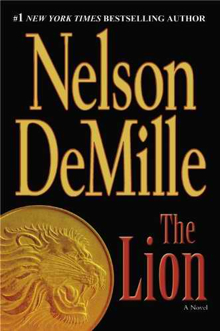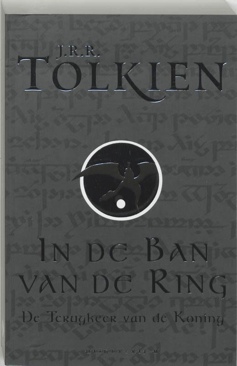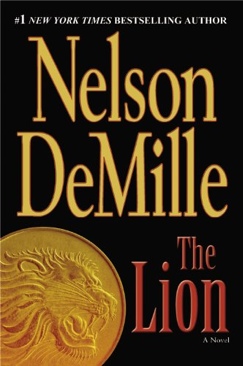![Great Expectations - Charles Dickens (T.B. Peterson And Brothers - Hardcover) book collectible [Barcode 9780141040363] - Main Image 1](https://www.icollecteverything.com/images/book/main/350/3502287_1.jpg)
![Great Expectations - Charles Dickens (T.B. Peterson And Brothers - Hardcover) book collectible [Barcode 9780141040363] - Main Image 2](https://www.icollecteverything.com/images/book/main/350/3502287_2.jpg)
![Great Expectations - Charles Dickens (T.B. Peterson And Brothers - Hardcover) book collectible [Barcode 9780141040363] - Main Image 3](https://www.icollecteverything.com/images/book/main/350/3502287_3.jpg)
![Great Expectations - Charles Dickens (T.B. Peterson And Brothers - Hardcover) book collectible [Barcode 9780141040363] - Main Image 4](https://www.icollecteverything.com/images/book/main/350/3502287_4.jpg)
Title:
Great Expectations
Genre:
Fiction
Show More
Series:
Penguin English Library
Binding:
Hardcover
Edition:
2nd
Narrative:
First Person
Type of Book:
Fiction
Number of Pages:
514
Number of Chapters:
59
Synopsis:
Determining the value of a book like the one you’ve shown, which appears to be an early edition of Great Expectations by Charles Dickens published by T. B. Peterson and Brothers in Philadelphia, involves several factors. Based on the image and my knowledge, here’s an analysis:
1. Edition and Publication Details: The book mentions being “Complete in One Volume” and includes illustrations by John McLenan, which aligns with some early American editions of Great Expectations. T. B. Peterson and Brothers were known for publishing Dickens’ works in the mid-19th century, often shortly after the first British editions. The first American edition of Great Expectations was published in 1861, and Peterson editions from that era can be significant if they are among the earliest printings.
2. Condition: The value of an antique book heavily depends on its condition. The visible page shows some wear and discoloration, which is common for a book of this age. However, factors like intact binding, the presence of all illustrations (it mentions 34), and the condition of the cover and other pages (not visible here) will greatly affect its worth. If it’s in good condition with minimal damage, its value increases.
3. Rarity and Demand: First or early editions of Dickens’ works, especially with original illustrations, are highly sought after by collectors. However, Peterson editions were mass-produced, so the rarity depends on the specific printing and any unique features (e.g., a first printing with original binding or a signed copy, though signatures are unlikely without further evidence).
4. Market Value: Based on historical trends, an early Peterson edition of Great Expectations in average condition might range from $100 to $500 USD, with pristine copies or first printings potentially fetching $1,000 or more at auction. The exact value would require consultation with a rare book dealer or appraiser, as prices fluctuate based on current market demand.
5. Provenance: If the book has a notable history (e.g., owned by a famous person or with a documented lineage), its value could increase significantly.
Thank you for providing the publication date of 1861. This additional detail is significant, as it confirms that your copy of Great Expectations by Charles Dickens, published by T. B. Peterson and Brothers, aligns with the first American edition, which was released in 1861 shortly after the British serialization concluded. Here’s a more informed assessment based on this information:
Factors Affecting Value
1. First American Edition (1861): The 1861 Peterson edition is considered a first American edition, as it was one of the earliest printings of the novel in the United States. This increases its collectible value, especially if it is a first printing from that year. However, Peterson was known for reprinting popular titles quickly, so identifying whether it’s a first or later printing within 1861 (e.g., by checking the title page or printer’s details) is crucial.
2. Condition: As mentioned earlier, the condition is a major factor. The visible page shows aging (yellowing, stains), which is expected for a 164-year-old book. If the binding is intact, all 34 illustrations by John McLenan are present, and the covers are original (likely cloth or leather), the value will be higher. Any missing pages, torn illustrations, or significant damage would lower it.
3. Illustrations and Binding: The mention of “Thirty-Four Illustrations from Original Designs by John McLenan” is a positive sign. McLenan’s illustrations are a key feature of early American editions, and their presence in good condition adds value. The original binding (if preserved) also matters—early Peterson editions often had decorative cloth or leather covers.
4. Rarity and Market Demand: First American editions of Dickens’ works are prized by collectors, though Peterson editions were widely distributed, making them less rare than the British first edition (published by Chapman and Hall). Still, a 1861 copy in decent condition can attract interest. Current demand for Dickens’ first editions remains strong, driven by literary and historical enthusiasts.
5. Provenance and Annotations: If the book has any inscriptions, signatures (e.g., from Dickens or a notable owner), or a documented history, its value could rise significantly.
Estimated Value
Based on available data and trends up to June 22, 2025:
• A 1861 Peterson edition in poor to fair condition (worn binding, some missing pages or illustrations) might range from $100 to $300 USD.
• In good condition (intact binding, all illustrations present, minor wear), it could be valued between $500 and $1,500 USD.
• In excellent or near-mint condition (rare for a book of this age), it might fetch $2,000 to $3,000 or more at auction, especially if it’s a verified first printing.
1. Edition and Publication Details: The book mentions being “Complete in One Volume” and includes illustrations by John McLenan, which aligns with some early American editions of Great Expectations. T. B. Peterson and Brothers were known for publishing Dickens’ works in the mid-19th century, often shortly after the first British editions. The first American edition of Great Expectations was published in 1861, and Peterson editions from that era can be significant if they are among the earliest printings.
2. Condition: The value of an antique book heavily depends on its condition. The visible page shows some wear and discoloration, which is common for a book of this age. However, factors like intact binding, the presence of all illustrations (it mentions 34), and the condition of the cover and other pages (not visible here) will greatly affect its worth. If it’s in good condition with minimal damage, its value increases.
3. Rarity and Demand: First or early editions of Dickens’ works, especially with original illustrations, are highly sought after by collectors. However, Peterson editions were mass-produced, so the rarity depends on the specific printing and any unique features (e.g., a first printing with original binding or a signed copy, though signatures are unlikely without further evidence).
4. Market Value: Based on historical trends, an early Peterson edition of Great Expectations in average condition might range from $100 to $500 USD, with pristine copies or first printings potentially fetching $1,000 or more at auction. The exact value would require consultation with a rare book dealer or appraiser, as prices fluctuate based on current market demand.
5. Provenance: If the book has a notable history (e.g., owned by a famous person or with a documented lineage), its value could increase significantly.
Thank you for providing the publication date of 1861. This additional detail is significant, as it confirms that your copy of Great Expectations by Charles Dickens, published by T. B. Peterson and Brothers, aligns with the first American edition, which was released in 1861 shortly after the British serialization concluded. Here’s a more informed assessment based on this information:
Factors Affecting Value
1. First American Edition (1861): The 1861 Peterson edition is considered a first American edition, as it was one of the earliest printings of the novel in the United States. This increases its collectible value, especially if it is a first printing from that year. However, Peterson was known for reprinting popular titles quickly, so identifying whether it’s a first or later printing within 1861 (e.g., by checking the title page or printer’s details) is crucial.
2. Condition: As mentioned earlier, the condition is a major factor. The visible page shows aging (yellowing, stains), which is expected for a 164-year-old book. If the binding is intact, all 34 illustrations by John McLenan are present, and the covers are original (likely cloth or leather), the value will be higher. Any missing pages, torn illustrations, or significant damage would lower it.
3. Illustrations and Binding: The mention of “Thirty-Four Illustrations from Original Designs by John McLenan” is a positive sign. McLenan’s illustrations are a key feature of early American editions, and their presence in good condition adds value. The original binding (if preserved) also matters—early Peterson editions often had decorative cloth or leather covers.
4. Rarity and Market Demand: First American editions of Dickens’ works are prized by collectors, though Peterson editions were widely distributed, making them less rare than the British first edition (published by Chapman and Hall). Still, a 1861 copy in decent condition can attract interest. Current demand for Dickens’ first editions remains strong, driven by literary and historical enthusiasts.
5. Provenance and Annotations: If the book has any inscriptions, signatures (e.g., from Dickens or a notable owner), or a documented history, its value could rise significantly.
Estimated Value
Based on available data and trends up to June 22, 2025:
• A 1861 Peterson edition in poor to fair condition (worn binding, some missing pages or illustrations) might range from $100 to $300 USD.
• In good condition (intact binding, all illustrations present, minor wear), it could be valued between $500 and $1,500 USD.
• In excellent or near-mint condition (rare for a book of this age), it might fetch $2,000 to $3,000 or more at auction, especially if it’s a verified first printing.
Author:
Charles Dickens
Show More
Publisher:
T.B. Peterson And Brothers
Barcode:
9780141040363
Publication Date:
1860-01-01
Number of Copies:
1
Language:
English
Automatic Estimated Value:
~$12.77
Automatic Estimated Date:
2025-04-27
Date Added:
2018-06-26 16:21:21




